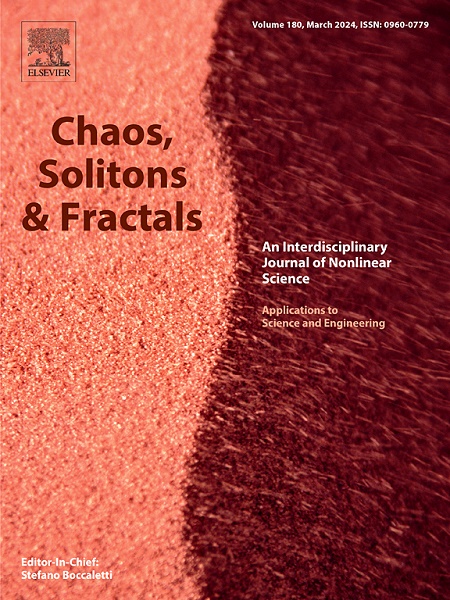Strontium ferrite nanoparticles based broadband nonlinear optical modulator for ultrafast pulse generation in fiber lasers
IF 5.3
1区 数学
Q1 MATHEMATICS, INTERDISCIPLINARY APPLICATIONS
引用次数: 0
Abstract
Nanomaterials exhibiting broadband nonlinear optical responses have garnered considerable interest in the field of ultrafast photonics. These materials have been extensively validated as effective saturable absorbers (SAs), demonstrating their capability to facilitate the generation of broadband optical pulses. In this study, strontium ferrite nanoparticles (SrFeO-NPs), were synthesized using the sol-gel method and were then employed as SA to initiate ultrafast pulse operation in fiber lasers. The prepared NPs exhibited excellent nonlinear absorption properties, enabling the measurement of modulation depth and saturation intensities across the 1–2 μm spectral range. The measured results showed that the SrFeO-NPs as SA in fiber lasers yielded pulse durations in the femtosecond (fs) domain in Yb, Er, and Tm-doped fiber lasers, with pulse durations of 801 fs, 857 fs, and 671 fs, respectively. The performance characteristics of the output pulses, containing wavelength, repetition rates, output power, pulse energy, and stability, were also examined and discussed in detail. This study paves the way for novel approaches in integrating diverse materials, thereby advancing the development of broadband laser systems utilizing nanomaterials for applications in the extended near to mid-infrared spectral region.
基于铁酸锶纳米颗粒的光纤激光器超快脉冲宽带非线性光调制器
具有宽带非线性光学响应的纳米材料在超快光子学领域引起了广泛的关注。这些材料已被广泛验证为有效的饱和吸收剂(SAs),证明了它们促进宽带光脉冲产生的能力。本研究采用溶胶-凝胶法制备了铁酸锶纳米颗粒(SrFeO-NPs),并将其作为SA用于光纤激光器的超快脉冲操作。所制备的纳米粒子具有良好的非线性吸收特性,可以在1 ~ 2 μm光谱范围内测量调制深度和饱和强度。结果表明,SrFeO-NPs作为SA在掺镱、铒和铥的光纤激光器中产生的脉冲持续时间在飞秒(fs)域,脉冲持续时间分别为801 fs、857 fs和671 fs。对输出脉冲的波长、重复频率、输出功率、脉冲能量和稳定性等性能特性进行了详细的研究和讨论。该研究为整合不同材料的新方法铺平了道路,从而推动了利用纳米材料在扩展的近红外到中红外光谱区域应用的宽带激光系统的发展。
本文章由计算机程序翻译,如有差异,请以英文原文为准。
求助全文
约1分钟内获得全文
求助全文
来源期刊

Chaos Solitons & Fractals
物理-数学跨学科应用
CiteScore
13.20
自引率
10.30%
发文量
1087
审稿时长
9 months
期刊介绍:
Chaos, Solitons & Fractals strives to establish itself as a premier journal in the interdisciplinary realm of Nonlinear Science, Non-equilibrium, and Complex Phenomena. It welcomes submissions covering a broad spectrum of topics within this field, including dynamics, non-equilibrium processes in physics, chemistry, and geophysics, complex matter and networks, mathematical models, computational biology, applications to quantum and mesoscopic phenomena, fluctuations and random processes, self-organization, and social phenomena.
 求助内容:
求助内容: 应助结果提醒方式:
应助结果提醒方式:


